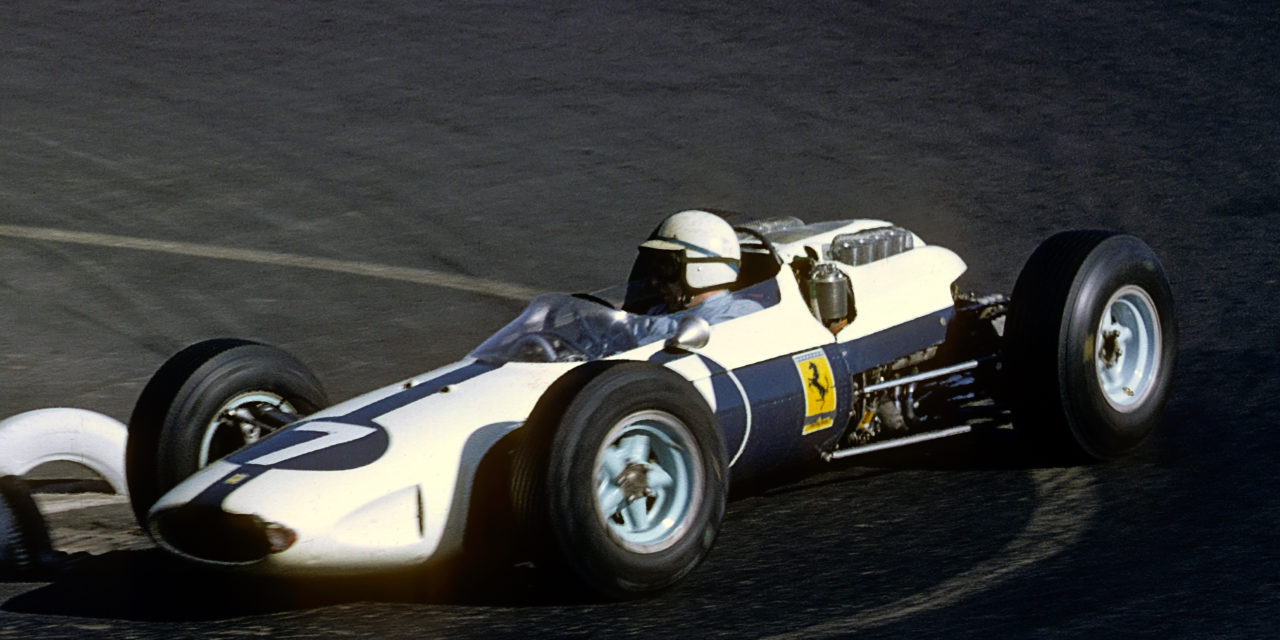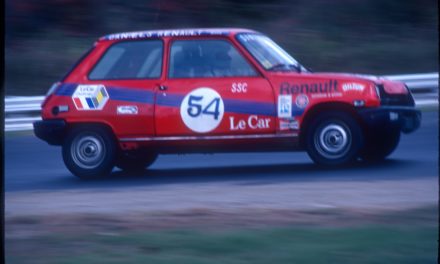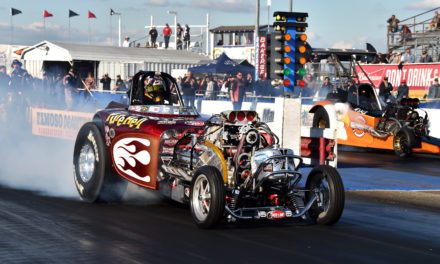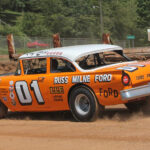Ahead of this weekend’s Mexican Grand Prix, we step back nearly 60 years, when three Englishmen traveled to the Autódromo Hermanos Rodríguez in Mexico with the chance of becoming Formula 1 world champion.
Even for an optimist, winning the 1964 title at the season-ending Mexican Grand Prix was a tall order for John Surtees. Vapor lock in his Ferrari’s fuel system sent him to the back of the pack, in the early stages of the contest. Relegated to 13th place, Surtees was far behind the first or second place needed to take his first title.
Once the vapor lock sorted itself out, the Ferrari engine started to sing and Surtees began his climb through the pack in a streak of dark blue. Yes, blue.
Enzo was in the middle of a dispute with Italy’s national motorsport body (the ACI), so for the final two races of the 1964 season, the Ferrari boss opted to campaign his open wheel racers under the North American Racing Team—a stateside firm captained by ex-racer Luigi Chinetti—and their patriotic colors of blue-and-white.
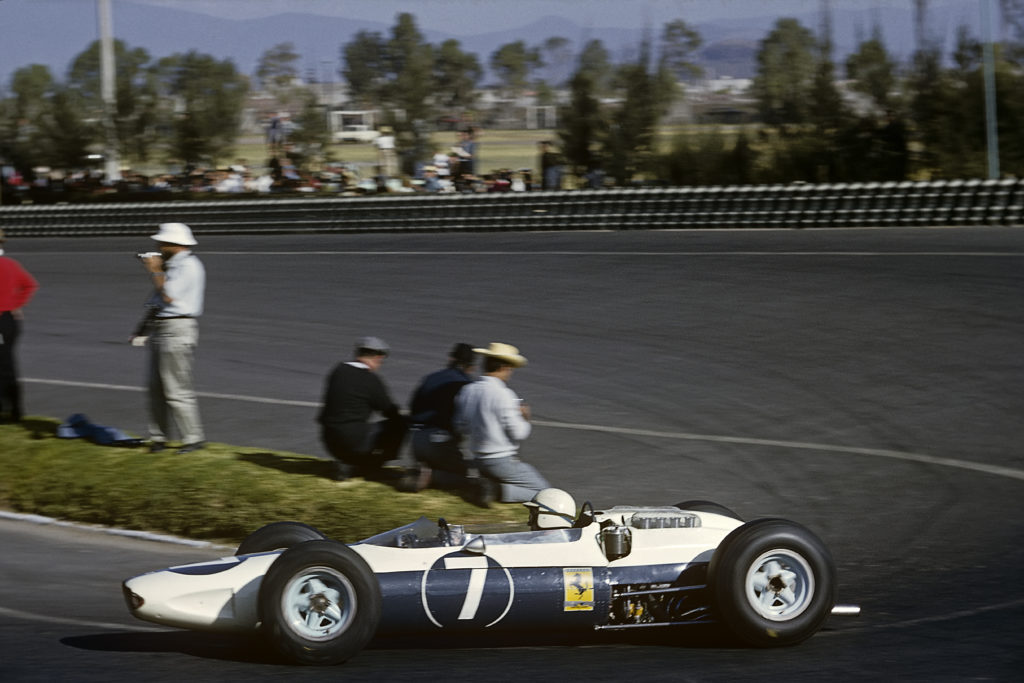
(Photo by Bernard Cahier/Getty Images)
Luckily, Surtees knew all about winning championships regardless of politics, liveries, or even the number of wheels. Prior to his F1 stint, Surtees was a motorcycle menace. In 1958, ’59 and ’60 he managed to pull off a triple-double—winning the 350cc and 500cc championships three years in a row.
A perfectionist by nature, John had always operated by the mantra of controlling what you can and the rest will fall into place. This explains why he stuck with the 1.5-liter V8 in the back of his Ferrari as opposed to switching to a 12-cylinder powerplant.
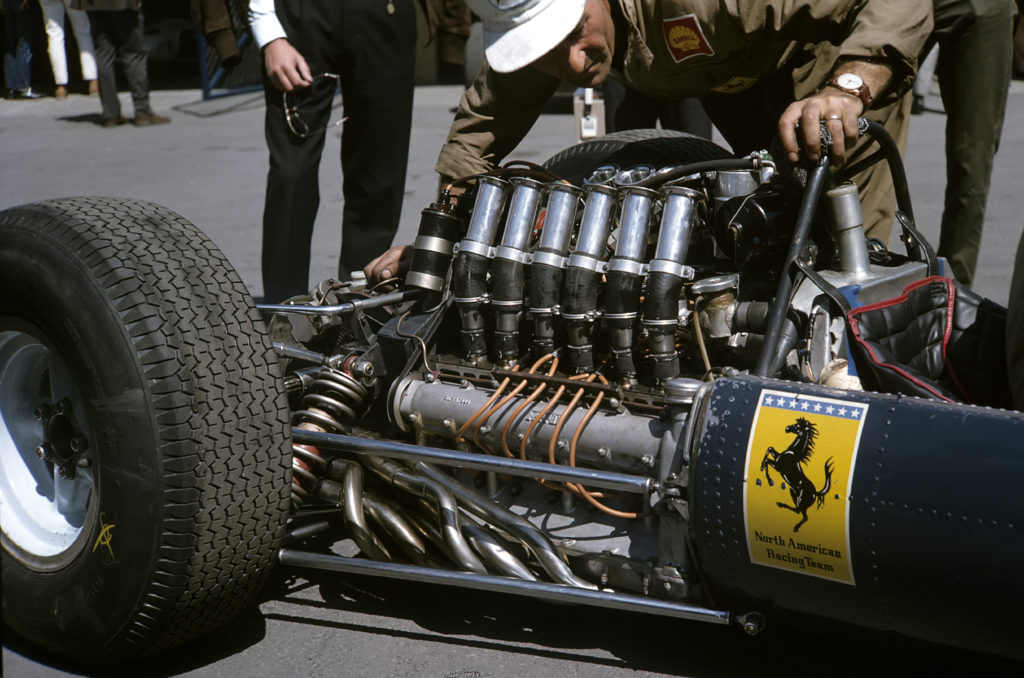
Ferrari’s 1.5-liter V12. (Photo by Bernard Cahier/Getty Images)
For most of the 1964 season, the V8 had been reliable, propelling him to wins in Germany and Italy. The flat 12, preferred by his teammate Lorenzo Bandini, was unproven in terms of reliability but designed for circuits where power was important, such as the Autódromo Hermanos Rodríguez. Still, the V8 was suitable for Surtees.
By lap five, he was eighth.
Seven laps later, he was sixth.
Points leader Graham Hill was third in a BRM. Out front, fellow championship hopeful Jim Clark held a substantial lead in the British Racing Green Lotus.
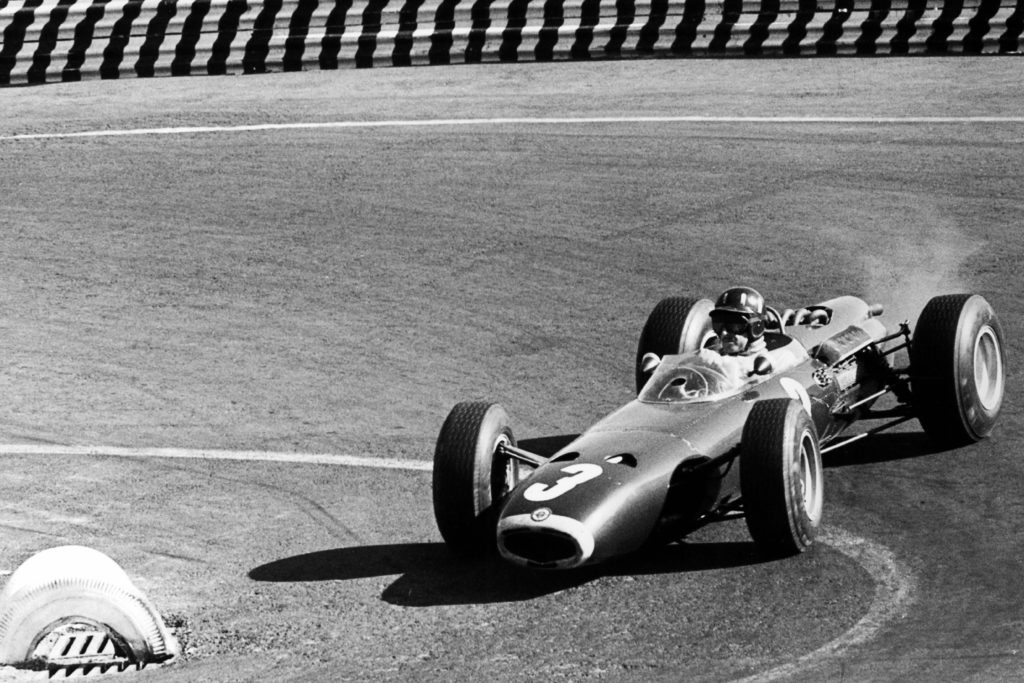
Graham Hill the BRM P261 (Photo by Bernard Cahier/Getty Images)
World champion Hill had been the favorite for the 1964 championship. All he had to do was finish third or higher in Mexico. For reigning title holder Clark, it was a tougher ask. To take his second consecutive trophy, he needed to win with Surtees finishing worse than second and Hill worse than third.
Fate smiled on Clark and Surtees on lap 31. Bandini was making good use of the 12-cylinder Ferrari engine, as he nipped at Hill’s gearbox. He tried to pass the BRM at the turn six hairpin a number of times but the Brit rebuffed him.
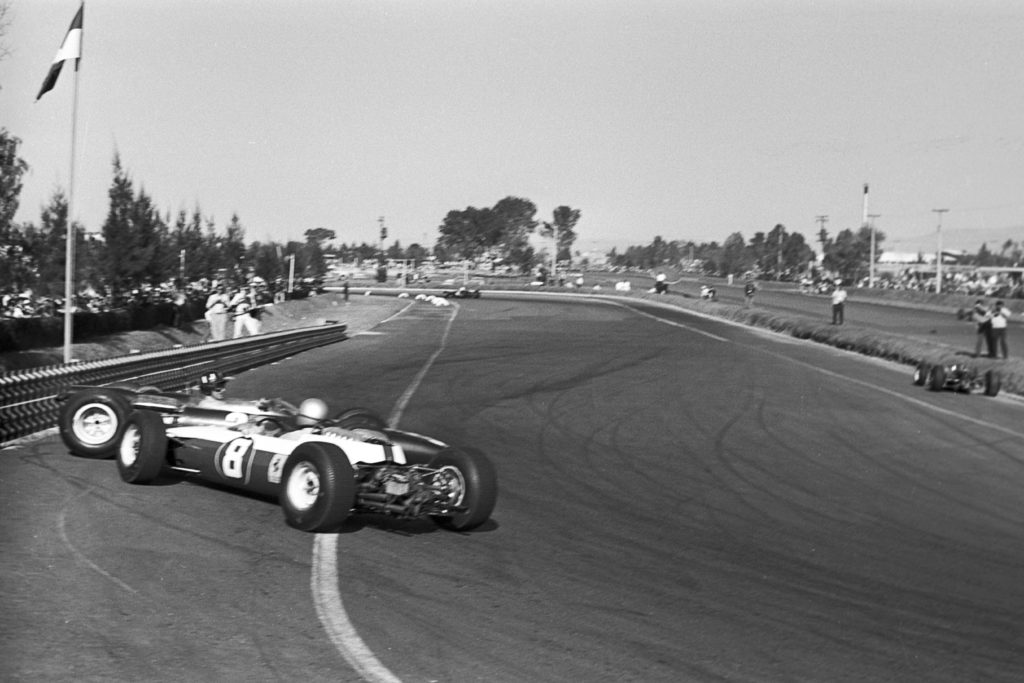
Lorenzo Bandini tangles with Graham Hill. (Photo by Bernard Cahier/Getty Images)
Then, in game of chicken reminiscent of modern F1, the Bandini barged his rival out of the way and went through. The contact spun Hill backwards into the barriers, damaging the BRM’s exhaust. After a quick repair he was able to re-join the race, but the damage was already done in the title fight. His points deficit would be insurmountable.
Bandini’s bash cost the Italian driver time, too, as he fell behind Surtees. The glimmer of hope for Surtees was short-lived. In less than two laps, the flat-12 pushed him past his teammate and up into third place.
Clark was still in control of the race and the championship. That season, he had won three races, but failed to finish five. His luck—and the reliability of his Lotus with its Climax V8 engine—wasn’t about to change.
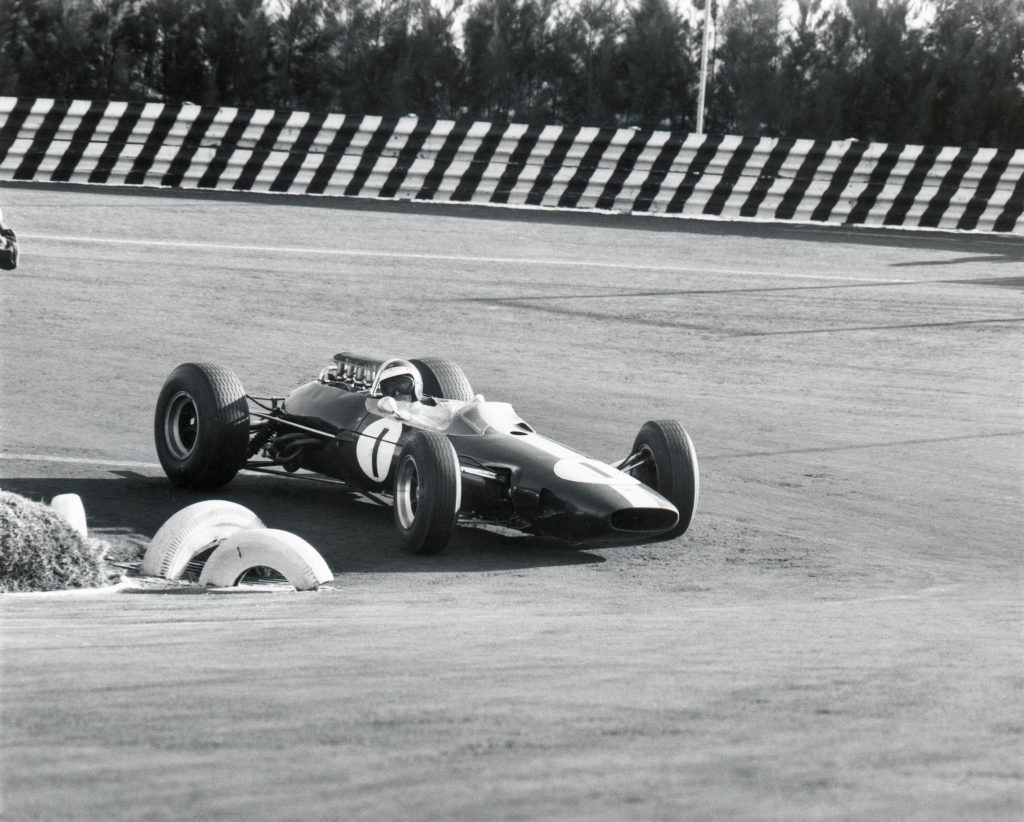
Jim Clark (Photo by Robert Riger/Getty Images)
As the last handful of laps ticked away, Clark reportedly saw oil around the track and wondered who was dropping it. The next lap, he took a different line to avoid a particularly treacherous patch on the racing groove. The lap after that, much to his horror, he saw that his new line was coated in the slick stuff.
He was dropping the oil.
Unbeknownst to the Lotus driver, a low-pressure rubber hose supplying the V8 with its lifeblood had burst; one of those dime-a-dozen parts with thousand-dollar consequence. All Clark could do was hope that his engine would keep going to the end.
He slowed sufficiently and surrendered the lead. Even so, he was still world champion elect at the start of the penultimate lap.
Final lap: Clark’s engine was dry and began making a terrible racket. Traveling at a snail’s pace around the last corners, he raised both arms in the air in a gesture of hope that his engine would keep going. If his car could just roll across the line, the title would be his.
No such luck. Completely out of oil, the tortured Climax V8 seized and Clark slid to a halt. Despair descended upon the Lotus pit. At that precise moment, the Ferrari stand broke into mayhem.
The Italians had seen Clark going slowly. It took them only a second to realize that if Surtees finished second he would be world champion. All he had to do was pass his teammate Bandini.
Leaning over the pitwall, the Ferrari mechanics waved, shouted, jumped up-and-down—just about anything to signal Bandini to slow. Luckily, for Surtees, the Italian was a team player and eased off the throttle. Surtees passed him in the final circuit and secured his first F1 championship.
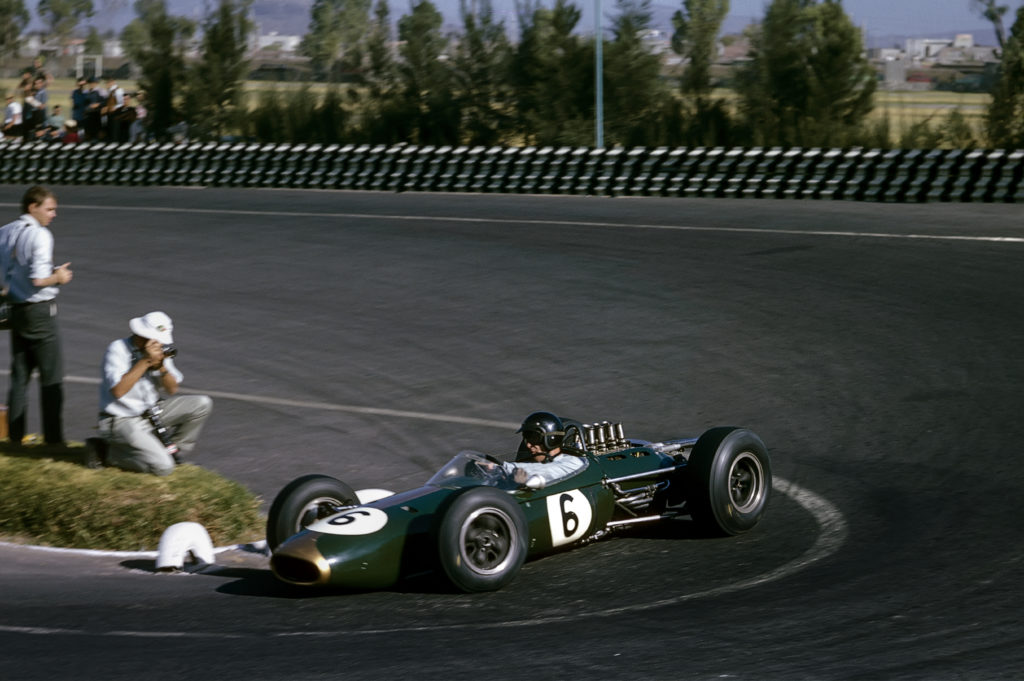
Dan Gurney in the Brabham BT7 (Photo by Bernard Cahier/Getty Images)
With so much drama in the closing laps, it’s easy to forget that the champ didn’t win the race. He finished second to Dan Gurney. The American, aboard a Brabham, led the last two laps in Mexico and took the third of his four career F1 wins.
Meanwhile, Big John (“Il Grande John,” as the Italians called him) had just become the first—and still only—man to win world championships in motorcycle and grand prix racing. And he did it in a blue Ferrari.
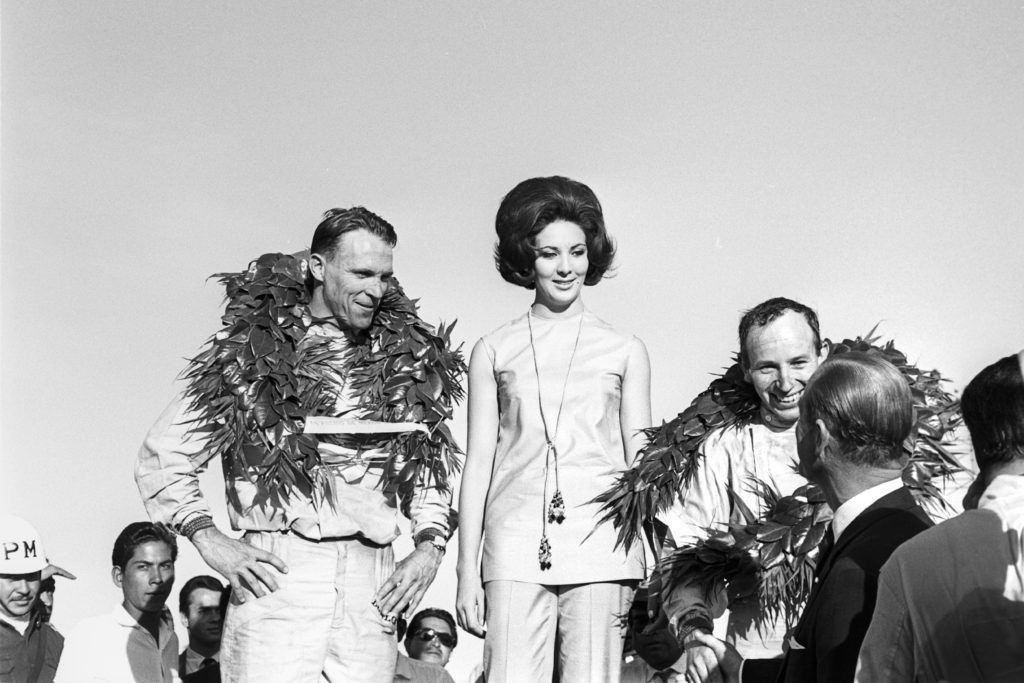
Dan Gurney (left) won the battle while John Surtees (right) won the war. (Photo by Bernard Cahier/Getty Images)

